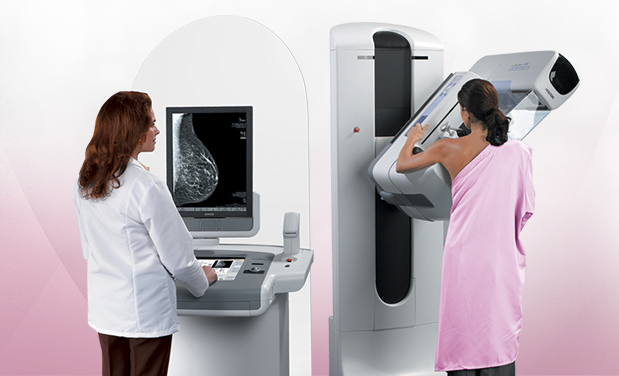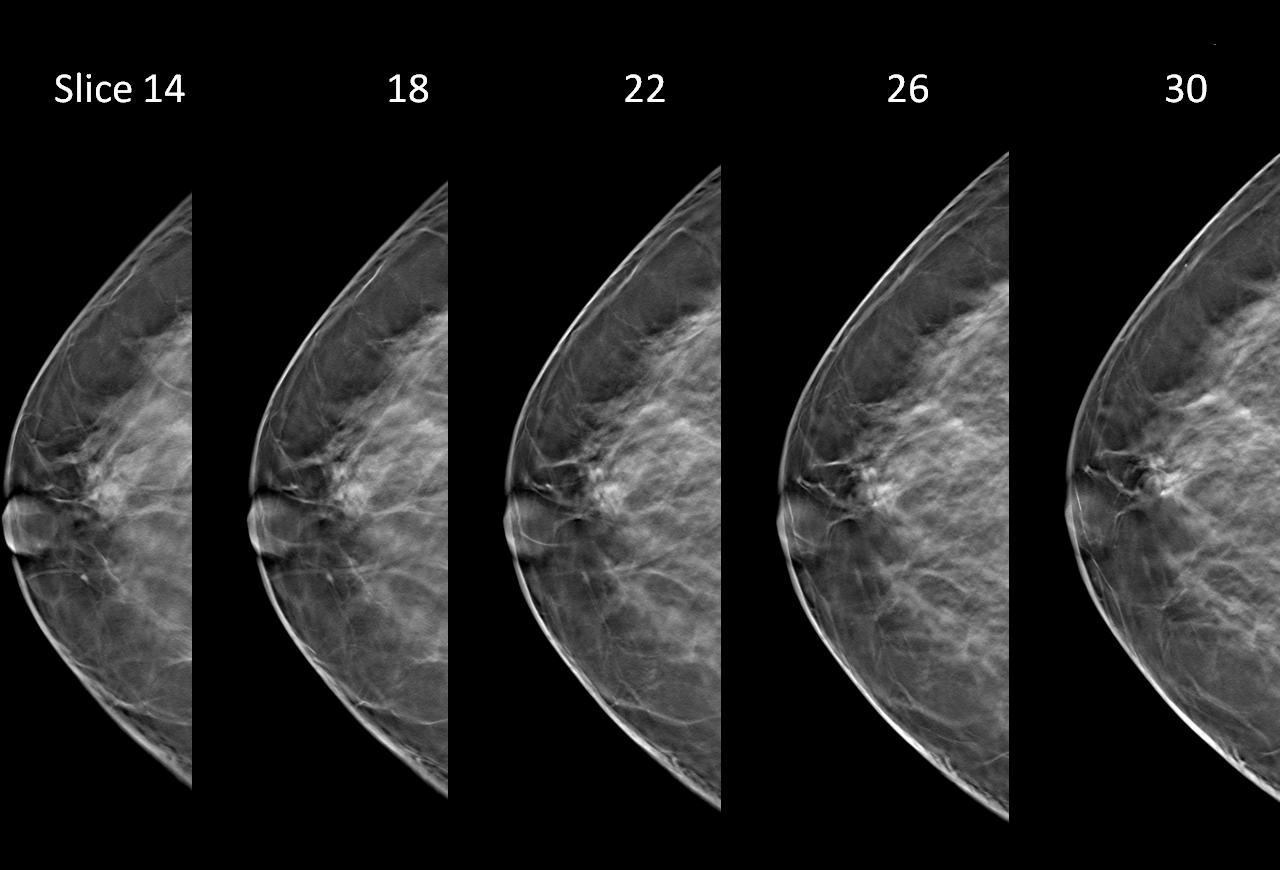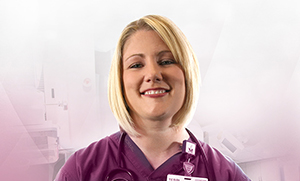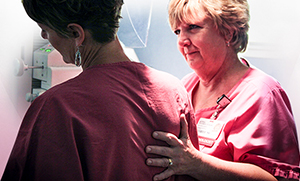3D Mammography

The most exciting advancement in breast cancer detection in more than 30 years!
To the patient, a 3D mammography exam is very similar to a 2D mammogram. The technologist will position you, compress your breast, and the X-ray arm sweeps in a slight arc over your breast while taking multiple images from different angles. The computer produces a 3D image of your breast tissue in one millimeter slices, providing the radiologist with the ability to see breast detail in a way never before possible.
The radiologist then will examine the images of your breast like pages of a book and report results to your physician.
The 3D images make it possible for the radiologist to gain a better understanding of your breast tissue during screening, significantly improving early breast cancer detection and providing the confidence to reduce the need for follow-up imaging by up to 40%.
Using 3D mammography and digital mammography together for screening has been proven to reduce callbacks by 18%.
The Benefits of 3D Mammography
With conventional digital mammography, the radiologist is viewing all the complexities of your breast tissue in one flat image. Sometimes breast tissue can overlap, giving the illusion of normal breast tissue looking like an abnormal area. By looking at the tissue in one-millimeter slices, the radiologist can see greater detail and provide a more accurate exam.
In this way, 3D mammography can find more invasive cancer than with conventional 2D mammography. In addition, it finds cancers earlier than 2D mammography alone, with a 27% increase in cancer detection and a 30-40% increase in invasive cancer detection.
Your breast is three dimensional. Your mammogram should be too.
In a conventional 2D mammogram, there appears to be an area of concern that the doctor may want to further investigate with another mammogram or biopsy. Looking at the same breast tissue in the 3D mammography image slices, the doctor can now see that the tissue is in fact normal breast tissue that was overlapping in the traditional mammogram, creating the illusion of an abnormal area.

In this scenario, this patient likely avoided a callback for an additional mammogram and possible biopsy thanks to the 3D mammography exam technology.
X-Ray or Radiation Exposure
Very low X-ray energy is used during the screening examination, so your radiation exposure for a 3D mammogram is below the FDA guidelines.
Who Can Have a 3D Mammogram?
It is approved for all women who would be undergoing a standard mammogram in both the screening and diagnostic settings. It is especially recommended for women with dense breast tissue.
What’s the Difference Between a Screening and Diagnostic Mammogram?
A screening is your annual mammogram done routinely every year, which is now usually done with 3D technology. If your screening mammogram shows a possible abnormality, you may be called back for additional diagnostic mammograms or ultrasound.
3D mammography close to you!
Harold & Dixie LePere Breast Health Center
1414 Cross Street, Suite 220
Shiloh, Illinois 62269
Memorial Hospital Belleville
Radiology Department (screening mammography only)
4500 Memorial Drive
Belleville, Illinois 62226

Nurse Navigator
Our Breast Health Nurse Navigator is here to guide you through diagnosis and treatment.
Diagnostic Tests
Find out more about how we diagnose breast cancer.

